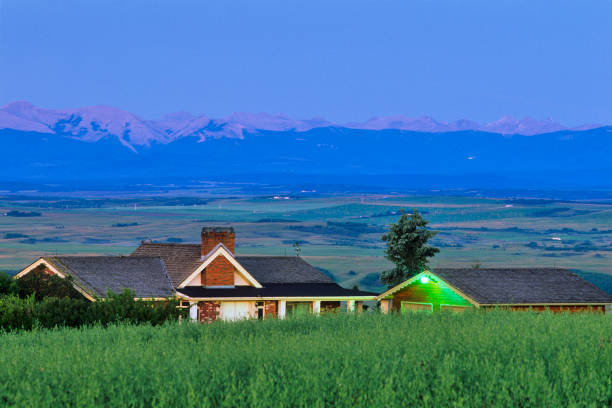The natural surroundings around them inspire Prairie-style houses. Their architects believe architecture should be defined by the landscape around them, not vice versa. The Prairie movement was born out of the Arts & Crafts movement, which emerged in the second half of the 19th Century. It originated in Chicago around 1900. It was designed to counter the cold, sterile architecture of the Industrial Revolution. They rejected mass-produced goods and embraced traditional artisan-crafted products. While Prairie-style homes remained true to the past, they also included modern elements such as flat planes and subtle ornamental flourishes. This allowed for a more harmonious blend of the past and the present. Here are some facts about Prairie-style homes:
What is a Prairie-Style House?
Prairie-style houses celebrate the beauty of nature, especially the prairies in the US Midwest. They are simple and unfussy and reflect a preindustrial time. Prairie-style houses are well-known for their functional and open floor plans, making them suitable for different designs, decor styles, and uses.
What makes a house Prairie-style?
Prairie-style houses blend in with the flat landscapes of the US Midwest prairies. They spread horizontally over large lots and don’t build upwards. The most well-known Prairie architect, Frank Lloyd Wright, said that Prairie-style houses “married to ground”.
Prairie-style houses are often flat rooflines or minimally pitched with overhanging gutters. They also have low-profile exteriors made of planes and lines. These houses are made with natural materials such as wood, stone, and rustic Brick.
Prairie-style houses, unlike other buildings, are not confined to the footprint of the building. They are designed from the inside and can spread out as far as they need. Prairie-style houses blend in with the natural world and foster a sense of community between their residents and the surrounding environment. Large windows let in sunlight and allow for views of the outside.
The interior design is functional and has lots of light. Like the Arts & Crafts movement and Prairie style, Prairie-style houses celebrate artisan craftsmanship. They include fine handmade elements such as stained glass, decorative woodwork and built-in fixtures. These handcrafted touches were subtle and seamlessly integrated into the house, making it a work of art.
These are the most popular elements in Prairie-style homes:
Exterior
- Low profile
- Horizontal lines and flat planes
- Exteriors made of wood, stone, Brick or stucco
- Connected indoor and outdoor spaces
Interior
- Open floor plans
- Natural woodwork and custom-made fixtures
- Simple ornamentation should be used sparingly
- Handmade craftsmanship
- Extra-large windows
Prairie-Style Houses: History
The Prairie style is a US version of Britain’s Arts & Crafts movement. It was created by a group of Chicago-based architects at the beginning of the 20th Century, including Frank Lloyd Wright, one of America’s most famous architects. The architects combined the natural ethos of Arts & Crafts and the writings of Louis Sullivan, also known as the “father of modernism”. Sullivan sought to create a style in architecture that reflected the beauty of America’s landscape and its bounty of natural resources. This style was not a derivative of European architecture but was unique to the US.
Although the Prairie School was short-lived and ended shortly after World War I, its ideals were incorporated into modern architecture in ranch-style houses. While many original Prairie-style houses, especially those designed by Frank Lloyd Wright, have been converted into museums, there are still some privately owned ones, most notably in Oak Park, Illinois.

